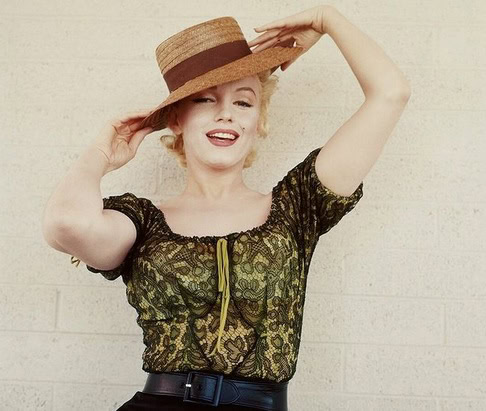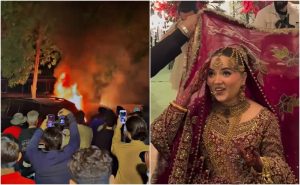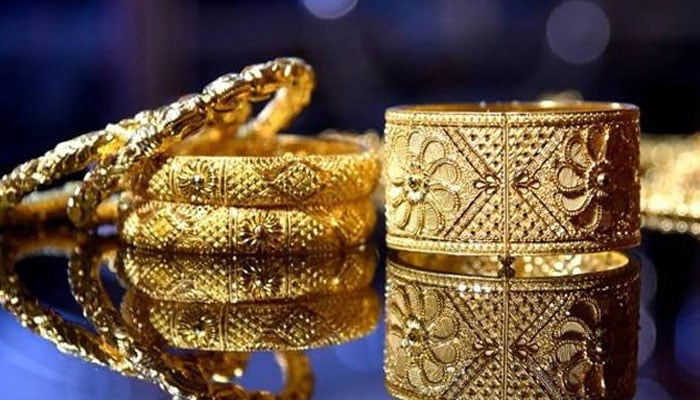Marilyn Monroe, the Hollywood goddess, the supreme sex symbol ever to adorn the screen, was found dead on the night between August 4 and 5,1962, at her residence in Brentwood, California. She was aged 36 at the time of her death. Marilyn Monroe was the most famous woman of her time. Sixty years after her death, her photographs are still sold as posters and adorn the pages of many a magazine and newspapers. Word was quickly put out that Marilyn had committed suicide. But there were too many unanswered questions about her death. These questions have been pursued by researchers and we now know that she was murdered.
At the time of her death she was at the peak of her career and looked forward to greater achievements. She had bought a home and on the day of her death some renovation of her house was being carried out by the son-in-law of her housekeeper. She had been offered $500,000 for a film and a million-dollar contract was on the desk of her lawyer awaiting her signature. She had every reason to look forward to a still burgeoning career and great prospects. Her former neighbor and close friend actress Jeanne Carmen had stated that at the beginning of August that year, Marilyn was upbeat, happy, and glad to be alive, and was looking forward to a great future. Why would she commit suicide? At the time of her death Marilyn was single. She had gone through four marriages, all of which ended in divorce.
On Sunday morning on August 5, in the early hours, Sergeant Jack Clemmons received a call informing him that Marilyn Monroe had died. Thinking it was a hoax, he asked the caller to confirm his identity. The caller responded: “I’m Dr. Hyman Engelberg, Marilyn Monroe’s physician. I’m at her residence. She’s committed suicide.” Sergeant Clemmons noted the time – it was 4:25 AM. When Clemmons arrived at the scene he saw and interacted with three persons: Eunice Murray the house keeper, Dr. Hyman Engelberg and Dr. Ralph Greenson, Marilyn’s psychiatrist. Dr. Greenson said to Clemmons that Marilyn had committed suicide and, pointing to an empty container of Nembutal, added “She took all of these.”
When Clemmons drew the sheet covering Marliyn’s naked body, he noticed that the body was bruised. He had seen many suicide cases and knew very well that an overdose of sleeping pills causes a lot of convulsions and vomiting before the victim dies. Such victims usually die in a contorted position. However, Marilyn’s face was in the pillow, her legs were straight and arms were slightly bent. So he asked those present if the body was moved. The doctors replied “No”. When he asked the doctors if they had tried to revive her they replied it was too late when they arrived. When asked, the housekeeper said that she had become suspicious around midnight after seeing her light on from under the bedroom door. The housekeeper said that she was going to her own washroom when she saw the light. When she knocked at the bedroom door there was no response and then she when tried to open the door it was locked. She immediately called Dr. Greenson who lived close by. Since the door was locked, Dr. Greenson went outside and peeped through the bedroom window and saw Marilyn lying motionless. So he broke the window glass and went inside and found her dead.
Sergeant Clemmons felt that in response to his various questions he was being given a prepared narrative by the three individuals. The most astonishing thing was that if they had found her dead around 12:30, why did they not inform the police straightaway. It took them four hours to inform the police! Dr. Greenson, who was doing most of the talking, replied that they had to seek permission form the publicity department of 20th Century Fox before revealing to anyone that she had died! When Clemmons asked them what they were doing for four hours they replied that they had been talking. When asked what were they talking about they were blank! Clemmons also noticed that there was no glass of drinking water or cup in the room because she could not have taken the pills without water. He asked the doctors to help him search for a glass or cup but none could be found either in the bedroom or the attached washroom. In fact, the water supply in the wash room had been temporarily closed due to renovation work. Further, her doctor, in response to a question, told Clemmons that she never used sedative injections and that she was only prescribed oral medicine. When Clemmons arrived in his office to file his preliminary report he was convinced that he was not being told the truth.
Shortly after 5:30 that morning Sergeant Robert Byron and his immediate boss started their questioning of witnesses. In answering the new police officers Eunice Murray repeated her story but made one change – she stated that the time when she grew suspicious was closer to 3:30, instead of 12:30 that she had told Clemmons. However, later, on August 9, when Marilyn’s friend, author and film maker, Robert Slatzer went to the premises he noticed that the recent carpeting of her bedroom was so thick and scarped against the door to such an extent that there was no question of any light coming from underneath the door!
New York Herald Tribune correspondent Joe Hyams had rushed to the Marilyn Monroe residence with a photographer. The head of the LAPD Intelligence Division James Hamilton was present along with several intelligence officers. This was unusual because Hamilton was almost never seen at a crime scene. Hyams was told by neighbors that they had heard the hysterical shouts of some woman shrieking “Murderers! You murderers! Are you satisfied now that she’s dead?” Neighbors also told Hyams that they had heard a helicopter circling overhead in the middle of the night.
The question of the approximate hour of Marilyn’s death was not too difficult to establish. Marilyn’s body was picked up by Guy Hockett of Westwood Village Mortuary and wheeled out some time between 5:30-6:00 AM. He noticed that the body had stiffened and she was not lying straight. It took him and his son about five minutes to straighten the body. The arms too had to be straightened out to put straps around her. From the rather advanced rigor mortis Guy Hockett estimated that Marilyn had died approximately 6 to 8 hours earlier i.e. roughly between 21:30-23:30 hrs on Saturday night.
When, on Sunday morning (August 5), the recently appointed deputy medical examiner Dr. Thomas Noguchi reported for duty at 6:00 AM, he found a most unusual telephone message for him from his boss Coroner Dr. Theodore Curphey. The note stated: “Dr. Curphey wants Dr. Noguchi to do the autopsy on Marilyn Monroe.” For such an important victim the autopsy would have normally been done by “a more senior officer” Noguchi stated later. When Marliyn’s name could not be found in the list of bodies in the coroner’s morgue and when the body was also not there, a search was launched and the body was traced to the Westwood Village Mortuary. Hockett was preparing to embalm the body when Noguchi demanded it from him. Hockett was extremely reluctant to relinquish the body, but had to give in because it was Noguchi’s jurisdiction. Noguchi, or anyone else, never found who called Hockett to pick up the body. This was another mystery.
Curphey was present at the autopsy and oversaw it. This was highly unusual. His presence was never recorded, but it was revealed much later by both, Curphey’s aide Lionel Grandison, as well as by Noguchi. In the words of Grandison: “For Coroner Curphey to attend an autopsy was unprecedented.” John Miner, a deputy district attorney, was also present at the autopsy. He specialized in medical and psychiatric law and was simultaneously associate clinical professor at the University of Southern California Medical School, as well as a lecturer at the LA Psychiatric Institute. In his latter capacity he was a colleague of Dr. Greenson and knew him well.
When Noguchi opened Marilyn’s stomach, hoping to see signs of the Nembutal tablets she had allegedly swallowed, he was shocked to see the stomach empty! Further, according to the examiner’s report, “A smear made from the gastric contents and examined under the polarized microscope shows no refractile crystals.” This means that Marilyn had not swallowed the forty or so capsules that Dr. Greenson had suggested. Further, Nembutal has a yellow content – its street name is “yellow jackets”. No yellowish content could be traced in her digestive tract. As Noguchi said, “I found absolutely no evidence of pills in the stomach or intestine. No residue. No refractile crystals.”
The toxicologist R.J. Abernethy very quickly concluded that Marilyn Monroe had died on account of a massive overdose of barbiturates. Donald Burleson Ph.D. writes: “When journalists Peter Harry Brown and Patte B. Barham spoke with the Abbott Laboratories, where Nembutal capsules are manufactured, a spokesman told them it was ‘just not possible’ for Marilyn to reach the described level of blood toxicity by ingesting capsules. The spokesperson estimated it would require Marilyn’s taking seventy-five to ninety capsules (and death would ensue long before she finished doing it). Also Abbott Labs told Marilyn’s friend Bob Slatzer, ‘It might have taken far more than ninety!’
On the bottom of his report Noguchi had written: “Unembalmed blood is taken for alcohol and barbiturate examination. Liver, kidney, stomach, and contents, urine and intestine are saved for further study.” When, subsequently, Noguchi asked for the report on kidney, stomach, urine and intestines, he was astonished to discover that the samples had simply vanished! In the words of Miner, “In the entire history of the LA County coroner’s office there had never been a previous instance of organ samples vanishing.”
The only way such an abnormal amount of barbiturates could have gone into her body was by injection. In fact, Marilyn was known to have difficulty in swallowing tablets or capsules. Her close friend Bob Slatzer had pointed out that she had the greatest difficulty in swallowing even an aspirin without choking, unless she had a big glass of water. And no glass or cup had been found in her room or washroom. Noguchi and Miner did not report seeing any needle mark or marks. In his book Coroner, Noguchi stated that it is extremely difficult to detect needle marks. He cited the case of John Belushi in which neither the coroner’s staff nor the chief of Forensic Medical Division was able to discover any needle marks. However, after traces of cocaine were found at the death scene, Noguchi writes about what he did. “I gripped Belushi’s upper right arm with both of my hands and squeezed . . . suddenly tiny drops of blood appeared at the inner elbow, but the fact that the fresh puncture had been so difficult to discover worried me. . . A medically clean needle had been used and only drops of blood revealed it.”
In order to complete the record Curphey asked John Miner to interview Dr. Greenson. Since, on August 5, Greenson had told Sergeant Clemmons that Marilyn had committed suicide, Miner expected him to repeat the same to him when, a week later, on August 12, he interviewed Greenson. Miner was, however, astonished to discover that Greenson had totally reversed his position! Greenson expressed the firm opinion that she had not committed suicide. Apart from discussing matters with him Greenson also asked Miner to hear a half hour tape that Marilyn had recorded. After listening to the tape and talking to Greenson, Miner also concluded that Mailyn Monroe had not committed suicide! He stated the following in his report to Dr. Curphey.
“As requested by you, I have been to see Dr. Greenson to discuss the death of his late patient Marilyn Monroe. We discussed this matter for a period of hours, and as a result of what Dr. Greenson told me, and from what I heard on the tape recordings, I believe I can say definitely that it was not a suicide.”
Miner’s report was a bombshell for Curphey. Instead of calling a grand jury that would question witnesses he suppressed the information and soon Miner’s report disappeared from the files. Curphey called his junior Lionel Grandison into his office and ordered him to sign the Marilyn Monroe file listing the cause of death as “probable suicide.” Grandison, however, was reluctant because he had noticed that many necessary documents were missing from the file. The report of the pathologist, the assessment of the police and reports of investigations by other agencies were always a part of such files. As Grandison put it years later: “I asked Dr. Curphey for the missing paperwork. . . . This was maybe the third or fourth time I had called the missing items to his attention. I had seen the initial autopsy report and this wasn’t the same report. The report had been completely changed.” When Grandison raised these points Curphey “got very angry” and said, “Listen you sign the death certificate . . . or else I’m gonna do something.” This was a clear threat and Grandison, a young man with a wife and children, could not afford to lose his job. So he complied and this is how it was formally declared that the cause of Marilyn’s death.
By the 1990s, computerized data banks of forensic reports had become available. Marilyn Monroe had such a high dosage of pentobarbital and chloral hydrate in her system that it was “sufficient to kill from nine to twenty people.” Donald Wolfe writes: “The information banks of forensic medicine further establish that there is no case on record of a fatal dose of oral ingestion involving such high concentrations in the blood of both pentobarbital and chloral hydrate. The victim inevitably dies before the fatal concentrations can approach such a high blood level.” Therefore, the only way such a high dosage can be administered is through an injection.
One of the most crucial items that went missing was Marilyn’s red diary. Bob Slatzer and Lionel Grandison claimed to have seen the red colored diary, her “book of secrets”. The handyman Norman Jeffries claimed to have seen it too. LA intelligence officer Mike Rothmiller also claims to have seen a copy of the diary.” Marilyn had once shown the diary to Bob Slatzer and his description of the contents of the diary was quite similar to that of Rothmiller. The diary was said to be a highly sensitive document as it may have contained secrets pertaining to national security that JFK might have divulged to Marilyn.
Marilyn had talked to several people on the phone in the hours before her death. At around 8:00 PM she received a call from Joe DiMaggio Jr. He had called her to discuss his girlfriend with her. He found her upbeat and normal. Around 8:30 she talked with her hairdresser Sidney Guilaroff. She discussed her split with Robert Kennedy and made plans to meet Guilaroff the following day to discuss the matter further. This does not indicate a suicidal bent of mind. She also told him that she knew a lot of secrets imparted to her by the Kennedy brothers. When he asked her what kind of secrets these were she responded “Dangerous ones.” This is a very significant reply. Around 9:00 she called her friend Jeanne Carmen asking her to come over and stay with her but Jeanne regretted. Jeanne Carmen subsequently expressed her feeling that Marilyn appeared “nervous and afraid”. Later when the phone rang Carmen did not pick it up to her eternal regret.
Sometime before 10:00 Marilyn received a call from the Mexican screenwriter Jose Bolanos. She had become romantically involved with him and he had accompanied her as an escort to Golden Globe awards in March 1962. He later said that on the phone Marilyn had told him “something shocking – something that will one day shock the whole world.” What could “shock the whole world”? It had to be one of the secrets imparted to her by JFK or his brother. That was probably her last telephonic conversation. Marilyn’s phones were tapped and earlier she had mentioned “Dangerous secrets” to Guilaroff. So she might have been treading dangerous ground by making such remarks. Bolanos said that Marilyn put the phone down instead of hanging up, and appeared to check on some commotion. But she never returned to the phone. It appears some unwelcome people had turned up at her residence at that hour.
What had really happened? Marilyn’s difficulties began after she became involved with both, John Kennedy, President of the U.S., and his brother Robert Kennedy, the Attorney General. To quote Burelson: “Throughout the early months of 1962 the classic love triangle existed, with JFK having the upper hand in Marilyn’s eyes at first, though she was intrigued with Bobby as well, often following him around and jotting down things that he said.” When, on May 19, 1962, at the instigation of Peter Lawford, Marilyn, wearing almost next to nothing, sang the famous Happy Birthday song for JFK in the presence of a distinguished crowd, Robert Kennedy tried to stop her from going on stage. Prior to her appearance the two had an argument. Her hairdresser Mickey Song had to redo her hair as it had become disheveled by the time Bobby (i.e., Robert) left. In the words of David Gardner, ”Marilyn looked sensational.”
It may also be mentioned that JFK and his wife had argued over Marilyn’s involvement at JFK’s birthday. Jackie had refused to attend the event. Instead she went horse riding in Virginia. Also, when in 1960, Marilyn was formally introduced to JFK, she had said to a friend: “I wish he hadn’t married Jackie. I’d like to be his wife.”
Soon after the birthday party J. Edgar Hoover, chief of FBI, had a meeting with JFK. Hoover probably told the President that he (i.e., the President) had become a security risk in view of the close association of Marilyn with left wing people, or with Marxists and Communists. After the meeting with J. Edgar Hoover, John Kennedy suddenly cut himself off from Marilyn. The two had a private line over which they could talk, but that line was suddenly unavailable. Marilyn could no longer reach the President.
In the year 1985 something very unexpected took place. Eunice Murray was being interviewed by the BBC for a documentary Say Goodbye to the President. In the interview Eunice Murray repeated the story she had been narrating since that fateful night of 1962. But when the camera and the lights were turned off Eunice Murray made some astounding remarks. Fortunately, the sound recorder was still rolling when she blurted out something most unexpected and most sensational, and it was recorded and made a part of the documentary. Author and researcher Anthony Summers had conducted her interview. Summers recalled: “As the camera crew were starting to clear up, she said suddenly, ‘Why at this age, do I still have to cover up this thing?’ I asked her what she meant, and she then astonished us by admitting that Robert Kennedy had indeed visited Marilyn on the day she died, and that a doctor and ambulance had come while she was still alive.” When Summers asked her that was Bobby the reason for Marilyn being upset she answered, “Yes, and it became so sticky that the protectors of Robert Kennedy, you know, had to step in and protect him . . .” That can be interpreted as implying murder by the “protectors”. While writing his book Summers had noted that Eunice Murray was very reluctant to enable him to reach her son-in-law, the handyman Norman Jeffries. Oddly Jeffries had not ever been questioned by the police.
It was author Donald Wolfe who tracked Norman Jeffries in 1992. He had been threatened and had remained silent for three decades. He was in a wheelchair and was terminally ill. “I guess they can very well electrocute me in a wheelchair”, he said. As revealed by Norman Jeffries in 1992, he and Eunice Murray were at the Marilyn residence when, between three and four in the afternoon, Robert Kennedy and Peter Lawford had visited Marilyn. At the time Patricia Newcomb too was present in the house even though Marilyn had told her that she was no longer welcome. The two had an argument about the Kennedy’s and Newcomb’s loyalty to the Kennedy’s had upset Marilyn. Norman Jeffries said in 1992, “Mr. Lawford made it very clear that he wanted Eunice and I out of there, and he told us to go to the market. He gave me some money and said to buy some Cokes.” When Jeffries and Eunice retuned about an hour later, Bobby Kennedy and Lawford were gone. They found Marilyn in a terrible state. Pat Newcomb was trying to calm her but to no avail. In the words of Jeffries, “Something terrible had happened – she was scared out of her mind. It’s something I will never forget. Marilyn was having this hysterical rage. It was like nothing I’ve ever seen. She was scared and at the same time she was terribly angry.” It was then that Eunice Murray called Dr. Greenson who arrived sometime between 4:30-5:00.
In the year 1995 Marilyn’s hairdresser Sidney Guilaroff revealed that he had talked twice to Marilyn on that fateful Sunday. During her first call in the “late afternoon or early evening” it was Marilyn who phoned “and was in an absolute state.” According to Guilaroff, “She was in tears and I had difficulty understanding her.” After Guillaroff had calmed her down, she said, “Bobby Kennedy was here, and he threatened me, screamed at me, and pushed me around.” Guilaroff knew that Marilyn was having an affair with John Kennedy (also known as Jack Kennedy), so he asked her what was Bobby doing at her place. “I knew about Jack, but she told me she had an affair with Bobby as well as Jack, and everything had gone wrong. Now she was afraid and felt she was in terrible danger. Bobby felt she had become a problem and had said to her, ‘If you threaten me, Marilyn, there are more than one ways to keep you quiet’.” After she had calmed Guilaroff told her to get some rest and that they would talk again in the evening, which they did, as mentioned earlier.
Norman Jeffries revealed that around 10:00 PM Robert Kennedy and two other men entered the house. They indicated very firmly to Eunice and Norman to leave the premises. And their return, it so appears, was a follow up to get something from Marilyn which she was unwilling to relinquish. The time mentioned by Norman Jeffries is around the same time when Marilyn was talking to Jose Bolanos and left the phone without disconnecting, never returning to the phone. It is likely that the commotion he mentioned may have been caused by the arrival of Robert Kennedy and his accompanying persons.
Norman Jeffries recalled the events of that night. He said: “We were told to leave. I mean they made it clear we were to be gone. But this time Eunice and I didn’t leave the neighborhood. We went to a neighbor’s house. I mean I had no idea what was going on. I mean, this was the attorney general of the United States. I didn’t know who the two men were with him. I assumed they were some sort of government men. We waited at the neighbor’s house for them to leave.” When they saw Bobby Kennedy and the two men leave around 10:30, they returned to the house. The dog was barking in the guest cottage and the door was open and the light was on. When they entered they saw her lying naked with the phone in her hand, face down.
Jeffries went on to state: “It didn’t look to me like she was breathing, and her color was awful – like she was dead. Eunice took the phone and called the ambulance. Then she put through an emergency call to Dr. Greenson, who was some place nearby and said he would be right over. He told Eunice to call Dr. Engelberg. I went to the gate to wait for the ambulance, but before the ambulance got there, Peter Lawford and Pat Newcomb arrived. Pat became hysterical and started screaming at Eunice. I had to take Eunice into the house. She was a basket case. I think, the ambulance arrived before Dr. Greenson.” So reports of an ambulance by the neighbors were also correct even though those with whom Sergeant Clemmons and Sergeant Byron interacted, never mentioned it.
In fact, a man named James Hall, who worked for Schaeffer’s Ambulance Service revealed that he was on duty nearby when the emergency call for Marilyn Monroe was received. And he described what happened in an interview to a tabloid. The owner of the ambulance service contradicted him initially by stating that Hall never worked for him. He lied and it was uncovered, and much later, in 1985, he admitted that his ambulance had gone to the Marilyn Monroe residence that fateful night. Apparently his ambulance service relied on government support and he could not then afford to antagonize the government.
James Hall went through several lie detector tests over a period of many years and passed each test. The revelations of Norman Jeffries in 1992 confirmed Hall’s statements. Hall had stated that Marilyn Monroe was in a comatose state when he arrived, and that he had begun reviving procedures and that she had recovered enough to be taken to the hospital. At this stage a person claiming to be her doctor came in and asked him to “apply positive pressure” i.e., remove the resuscitator and use mouth to mouth resuscitation procedures. Hall knew this was wrong but he could not argue with a doctor! The doctor tried to give Marilyn an injection of adrenalin but the needle hit the rib. As result she worsened and passed away shortly. The doctor checked her heart beat, asked Hall to leave, and said he was going to pronounce her dead as there was no heartbeat. A woman on the scene became hysterical while a man in a jumpsuit was trying to console her. Later he identified the woman as Pat Newcomb and the man in the jumpsuit as Peter Lawford. The doctor was identified as Dr. Greenson. A police officer came to the scene then and signed Hall’s papers.
Norman Jeffries also told Donald Wolfe that soon the place was swarming with men who looked like agents working for agencies. “After that all hell broke loose. . . . After that there were police cars, fire trucks, more ambulances – you name it. A police helicopter landed at the golf course and soon they were all over the place.” Jeffries stated that Dr. Engelberg also arrived and Marilyn’s body was moved from the cottage to the bedroom in the main house. The “locked room” scenario was then formulated by plain clothes police officials who had arrived at the scene. Jeffries said that at one point there were about a dozen plain clothes officers on the spot and then, all of a sudden, they were gone. The narration of Jeffries confirmed everything the neighbors had reported and also what James Hall had been saying for years., Robert Kennedy’s arrival earlier, the ambulance, the helicopter overhead. Jeffries passed away in 1993.
The revelations of Norman Jeffries, Eunice Murray, James Hall and Fred Otash (who had bugged the Marilyn residence and revealed the content of the recordings that day and night) mutually agree and are consistent with what the neighbors of Marilyn Monroe reported. Bobby was flown hundreds of miles away to Northern California by helicopter. They also confirmed the feeling of Sergeant Clemmons, the first police officer on the scene that he was not being told the truth and that Marilyn’s death was not a suicide but a homicide case.
There are two fundamental questions: a) What was Bobby Kennedy looking for at the Monroe residence? b) Why is it that every attempt at a grand jury trial was defeated by the powers that be even after JFK and RFK had been dead for years and decades? Why is the cover up going on six decades after her murder with the mainstream media sticking to the suicide story and publishing bits and pieces every now and then affirming her instability and suicidal state? Why? It was pointed out by Col. L. Fletcher Prouty in the context of the JFK assassination that it is the maintenance of the cover story that reveals the involvement of the top echelons. Similarly, none other than the CIA has the power to maintain a false cover story for six decades about Marilyn’s death. After all the CIA hated the Kennedys. Once they were gone the CIA had no interest in protecting their name. What was it that compels the CIA to suppress the truth about the murder of Marilyn Monroe?
It was in 2015 that Douglas Caddy, the Watergate lawyer for CIA official E. Howard Hunt, revealed that the night before he was to go to jail, E. Howard Hunt divulged the real reason for the assassination of John Kennedy. He told Caddy that the real reason JFK was killed was because he was going to give away the “most vital secret” of the US to the Russians. That vital secret he called the “alien presence”. JFK had ordered that the US and the Soviet Union collaborate with each other in space programs and this was unacceptable to the CIA. Had JFK revealed something to Marilyn Monroe about the alien presence during his romantic trysts? Did her diary contain anything about UFOs mentioned to her by JFK? Or was she going to reveal something about the alien presence whether or not it had been noted in her diary?
On August 3 Marilyn called Slatzer and told him that she was expecting to see Bobby over the weekend. When Slater told her that he had read in the papers that Bobby was in San Francisco to attend some conference, she told Slatzer that she would try to find out where he was staying. And then she said: “I’m going to blow the lid off this whole damn thing! I’m going to tell everything! Everybody has been calling trying to get the story anyway – Winchell, Kilgallen. And it’s clear to me now that Kennedys got what they wanted out of me and then moved on!” Slatzer told her to be discreet and not share her intentions with others. She told him that had already shared her intentions with a couple of people. That was the last time Slatzer and Marilyn talked. One may also recall that she told Bolanos the following day, on August 4, that she had “dangerous secrets” about the Kennedys and then she told him something which later prompted him to say that she was going to reveal something which would “one day shock whole world”. What were the “dangerous secrets” that would “shock the whole world”? Her affair with the brother could be termed an embarrassing secret but not a “dangerous” secret.
A purported CIA document, dated August 3, 1962, was somehow leaked in 1994 and it was analyzed by the research community interested in such matters. This document provided a link between UFOs, JFK, and Marilyn Monroe. The document referred to wiretapped conversations between Marilyn’s friend, the famous journalist Dorothy Kilgallen (murdered subsequently for having dug out the JFK assassination conspiracy) and Howard Rothberg and between Bobby Kennedy and Marilyn Monroe. The leaked document, with the subject title, Marilyn Monroe, stated that one “secret” that Marilyn mentioned was a visit by the President to a secret airbase to inspect things from outer space. The document has a project line titled Moon Dust. It has been established by researchers that this highly secret project pertains to collection of debris from fallen space vehicles. The project has been in existence since 1953. The routing of the leaked document contains a reference to MJ 12 (Majestic 12), a highly secret group set up by President Truman to deal with UFO matters.
The document states further: “Subject repeatedly called the Attorney General and complained about the way she was being ignored by the President. Subject threatened to hold a press conference and would tell all.” The document also states: “Subject made reference to her ‘diary of secrets’ and what the newspapers could do with such disclosures.” Clearly the CIA was concerned as to what the diary could contain. It was this diary that Bobby Kennedy was frantically demanding and searching in her house.
The name of James Jesus Angleton, who as head of the CIA counter-intelligence wing, dealt with UFO matters as well, appears on the document. JFK assassination researchers know well that Angleton was deeply involved in the JFK assassination conspiracy. The well-known UFO researcher, Dr. Steven Greer, was the one who acquired the document. He stated that the document came to him “by way of a contact with access to NSA officials.” He also stated that the wiretap document had “been authenticated by the best document researcher in the world – a man who for years sat outside General Odom’s door as his senior aide when Odom was NSA head.” What if Marilyn Monroe were to reveal the secret information regarding the “visit by the President to a secret air base for the purpose of inspecting things from outer space” to the media? This was a risk those running UFO matters could not afford to take. Marilyn Monroe was no doubt murdered. But the maintenance of the cover story that it was a suicide for six decades points to the influence of CIA in the matter. No other agency has the influence to maintain a false cover story world-wide for so long. To quote Donald Burleson Ph.D.: “The evidence speaks for itself. Norma Jeane Mortensen, whom the world knew and loved as Marilyn Monroe, was murdered at the behest of the officials of the United States government, and their reasons for doing so were quite literally out of this world.”














